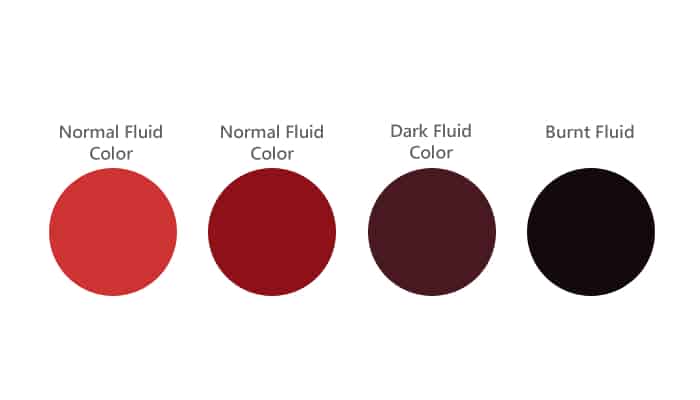Transmission Fluid Specifications for Your Chevy Sonic
When it comes to keeping your 2016 Chevy Sonic running smoothly, one of the most critical components to pay attention to is the transmission fluid. This fluid plays a vital role in ensuring your transmission operates efficiently, shifting gears smoothly, and preventing wear and tear on internal components. Let’s break down what you need to know about the type of transmission fluid recommended for your Sonic.
Manufacturer Recommendations
| Popular posts |
|---|
| What to do to prolong the life of your manual gearbox |
| Automatic transmission: what it is, how it works |
The manufacturer of your Chevy Sonic has specific recommendations for the type of transmission fluid that should be used. For the 2016 model, General Motors (GM) specifies the use of Dexron VI transmission fluid. This fluid is designed to provide optimal performance and protection for your vehicle’s transmission system.
Why Dexron VI?
Using the correct type of transmission fluid is crucial for several reasons:
- Compatibility: Dexron VI is formulated to meet the specific requirements of GM transmissions, ensuring compatibility and optimal performance.
- Temperature Stability: This fluid is engineered to maintain its viscosity across a wide temperature range, which is essential for the varied driving conditions your Sonic may encounter.
- Improved Longevity: Dexron VI includes advanced additives that help reduce wear and tear on transmission components, extending the life of your transmission.
- Enhanced Performance: This fluid provides better lubrication and reduces friction, which translates to smoother shifting and improved overall performance.
Fluid Specifications
Here are some key specifications for Dexron VI that you should be aware of:
- Viscosity: Dexron VI typically has a viscosity grade of 6.5 cSt at 100°C, which helps ensure proper flow and lubrication.
- Color: The fluid is usually a bright red color, making it easy to identify leaks or contamination.
- Performance Standards: Dexron VI meets or exceeds the performance standards set by GM, ensuring that it can handle the demands of your Sonic’s transmission.
Where to Find Dexron VI
You can find Dexron VI transmission fluid at most auto parts stores, dealerships, and online retailers. Always check the label to ensure that the product meets GM specifications. Using a fluid that does not meet these specifications can lead to transmission problems down the line.
In summary, using the correct transmission fluid is not just a recommendation; it’s a necessity for the longevity and performance of your 2016 Chevy Sonic. Stick to Dexron VI, and you’ll be on the right track to keeping your vehicle in top shape.
Recommended Oil Brands for Your Chevy Sonic’s Transmission Fluid
When it comes to choosing the right transmission fluid for your 2016 Chevy Sonic, the brand can make a significant difference in performance and reliability. Many owners have shared their experiences on forums and in discussions, providing valuable insights into which brands stand out. Below, we’ll explore some of the most recommended oil brands based on real-world feedback from Chevy Sonic owners.
Top Brands for Dexron VI Transmission Fluid
While the manufacturer recommends Dexron VI, several brands produce this fluid that have garnered positive reviews from users. Here are some of the most frequently mentioned:
- AC Delco: As the original equipment manufacturer (OEM) for GM vehicles, AC Delco’s Dexron VI fluid is often the go-to choice for many Sonic owners. Users appreciate its compatibility and performance, especially in maintaining smooth shifting.
- Mobil 1: Known for its high-quality synthetic oils, Mobil 1’s Dexron VI fluid has received praise for its ability to withstand extreme temperatures and provide excellent lubrication. Owners report improved shifting performance and reduced noise.
- Valvoline: Valvoline’s Dexron VI transmission fluid is another popular choice among Sonic drivers. Many users have noted that it offers great protection against wear and tear, making it a reliable option for daily driving.
- Castrol: Castrol’s transmission fluid is well-regarded for its performance in various driving conditions. Owners have highlighted its effectiveness in maintaining smooth gear changes, especially in stop-and-go traffic.
- Royal Purple: This brand is known for its high-performance synthetic oils. Royal Purple’s Dexron VI fluid is often recommended for those looking to enhance their vehicle’s performance. Users have reported noticeable improvements in shifting smoothness and overall transmission responsiveness.
Owner Experiences and Feedback
The feedback from Chevy Sonic owners can provide valuable insights into the effectiveness of these brands. Here are some common themes and experiences shared by users:
- Performance Consistency: Many owners have noted that using OEM fluids like AC Delco results in consistent performance. They often report fewer issues with slipping or harsh shifting compared to using off-brand alternatives.
- Temperature Management: Users of Mobil 1 and Valvoline have mentioned that these fluids perform well in extreme temperatures, which is crucial for maintaining transmission health, especially in regions with harsh climates.
- Longevity and Protection: Several owners have shared experiences where using high-quality fluids like Royal Purple has led to extended transmission life. They report fewer maintenance issues and a smoother driving experience over time.
- Cost vs. Quality: While some owners are willing to pay a premium for brands like Royal Purple, others have found that mid-range options like Valvoline or Castrol provide excellent performance without breaking the bank. This balance of cost and quality is often a hot topic in forums.
Where to Buy
Finding the right transmission fluid is essential, and many owners recommend purchasing from reputable sources. Here are some common places where you can find these recommended brands:
- Local Auto Parts Stores: Chains like AutoZone, O’Reilly Auto Parts, and Advance Auto Parts typically carry a variety of transmission fluids, including those from the brands mentioned above.
- Online Retailers: Websites like Amazon and RockAuto often have competitive prices and a wide selection of transmission fluids. Just ensure that you check for authenticity and reviews before purchasing.
- Dealerships: If you prefer OEM parts, visiting your local Chevy dealership is a reliable option. They will have AC Delco fluids and can provide guidance on any other maintenance needs.
In summary, choosing the right transmission fluid brand for your 2016 Chevy Sonic can significantly impact its performance and longevity. Based on owner feedback and experiences, brands like AC Delco, Mobil 1, Valvoline, Castrol, and Royal Purple stand out as reliable options. Always consider your driving conditions and preferences when selecting the best fluid for your vehicle.
Change Interval for Your Chevy Sonic Transmission Fluid
Maintaining your 2016 Chevy Sonic’s transmission fluid is crucial for ensuring the longevity and performance of your vehicle. Understanding the recommended change intervals and the nuances of partial transmission oil changes can help you keep your Sonic in top shape.
Recommended Change Intervals
For the 2016 Chevy Sonic, the general recommendation for changing the transmission fluid is every 50,000 to 100,000 miles (approximately 80,000 to 160,000 kilometers ). However, this can vary based on driving conditions and habits. Here are some factors to consider:
- Driving Conditions: If you frequently drive in stop-and-go traffic, tow heavy loads, or operate in extreme temperatures, you may need to change your transmission fluid more often, possibly around the 50,000-mile mark.
- Type of Driving: Highway driving typically puts less strain on your transmission compared to city driving, which can lead to longer intervals between fluid changes.
- Fluid Condition: Regularly checking the condition of your transmission fluid can help determine if it needs to be changed sooner. If the fluid appears dark or has a burnt smell, it’s time for a change.
Partial Transmission Oil Changes
In many cases, a full transmission fluid change involves removing the transmission from the vehicle, which can be a labor-intensive and costly process. This is where partial transmission oil changes come into play.
What is a Partial Transmission Oil Change?
A partial transmission oil change involves draining a portion of the old fluid and replacing it with new fluid. This method is often more accessible and can be performed without removing the transmission from the vehicle. Here are some key points about partial changes:
- Cost-Effective: Partial changes are generally less expensive than full fluid changes, making them a more budget-friendly option for regular maintenance.
- Less Downtime: Since this process is quicker, you can get back on the road sooner, which is especially beneficial for those who rely on their vehicles daily.
- Improved Fluid Quality: Regular partial changes can help maintain better fluid quality over time, as you are continually replacing degraded fluid with fresh fluid.
Justification for Partial Changes
Statistical data and expert recommendations support the practice of partial transmission oil changes. According to the Automotive Service Association (ASA) , regular maintenance, including fluid changes, can significantly extend the life of your transmission. They note that even partial changes can help remove contaminants and improve the overall health of the transmission system.
Additionally, a study published in the Journal of Automotive Engineering found that vehicles that underwent regular partial fluid changes experienced fewer transmission failures compared to those that only had full fluid changes at longer intervals. This suggests that maintaining fluid quality through partial changes can be a proactive approach to vehicle maintenance.
In summary, understanding the change intervals and the benefits of partial transmission oil changes can help you keep your 2016 Chevy Sonic running smoothly. Regular maintenance is key to preventing costly repairs down the line.
What Color Should Transmission Fluid Be?


